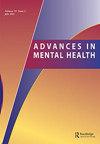Factors associated with help-seeking for emotional or mental health problems in community members at risk of suicide
IF 1.4
Q3 PSYCHIATRY
引用次数: 20
Abstract
ABSTRACT Objective: People experiencing mental health problems or suicidal thoughts often do not seek help. This study aims to investigate factors associated with help-seeking behaviours for emotional and mental health problems in individuals at risk for suicide. Method: A community sample was recruited online through Instagram and Facebook advertisements. There were 4277 participants in total, aged 18–84 (72.8% female, 26.8% male and .4% other), of which 1306 were classified as low/medium risk of suicide and 572 as high risk. Regression analyses examined factors associated with past year help-seeking from four categories of help: informal help, general practitioner, mental health professional, and tele/e-health. Predictors included: age, gender, exposure to suicide, psychological distress, suicidal ideation, and knowledge of and attitudes to suicide. Results: Overall, rates of help-seeking increased as risk for suicide increased. Higher levels of suicidal ideation were associated with a greater likelihood of having previously sought help from a GP and mental health professional, but a lower likelihood of having sought help from informal sources. Younger age was associated with past year help-seeking from informal sources and tele/e-health sources. Men had a significantly lower likelihood of having sought help from general practitioners. Different dimensions of attitudes towards suicide were also found to be associated with different types of help-seeking. Discussion: Understanding the characteristics and patterns of different forms of help-seeking can have important implications for the development of effective suicide prevention strategies.有自杀风险的社区成员寻求情感或精神健康问题帮助的相关因素
摘要目的:有心理健康问题或有自杀念头的人往往不寻求帮助。本研究旨在探讨自杀风险个体在情绪和心理健康问题上寻求帮助行为的相关因素。方法:通过Instagram和Facebook广告在线招募社区样本。共有4277名参与者,年龄在18-84岁之间(72.8%为女性,26.8%为男性,0.4%为其他),其中1306人被划分为低/中等自杀风险,572人被划分为高风险。回归分析检查了与过去一年寻求帮助有关的四类帮助的因素:非正式帮助、全科医生、心理健康专业人员和远程/电子保健。预测因子包括:年龄、性别、自杀经历、心理困扰、自杀意念、自杀知识和态度。结果:总体而言,寻求帮助的比率随着自杀风险的增加而增加。有较高自杀意念的人更有可能向全科医生和心理健康专家寻求帮助,但从非正式渠道寻求帮助的可能性较低。年龄较低与过去一年从非正式来源和远程/电子保健来源寻求帮助有关。男性向全科医生寻求帮助的可能性明显较低。对自杀态度的不同维度也被发现与不同类型的求助有关。讨论:了解不同形式的求助的特点和模式对制定有效的自杀预防策略具有重要意义。
本文章由计算机程序翻译,如有差异,请以英文原文为准。
求助全文
约1分钟内获得全文
求助全文

 求助内容:
求助内容: 应助结果提醒方式:
应助结果提醒方式:


